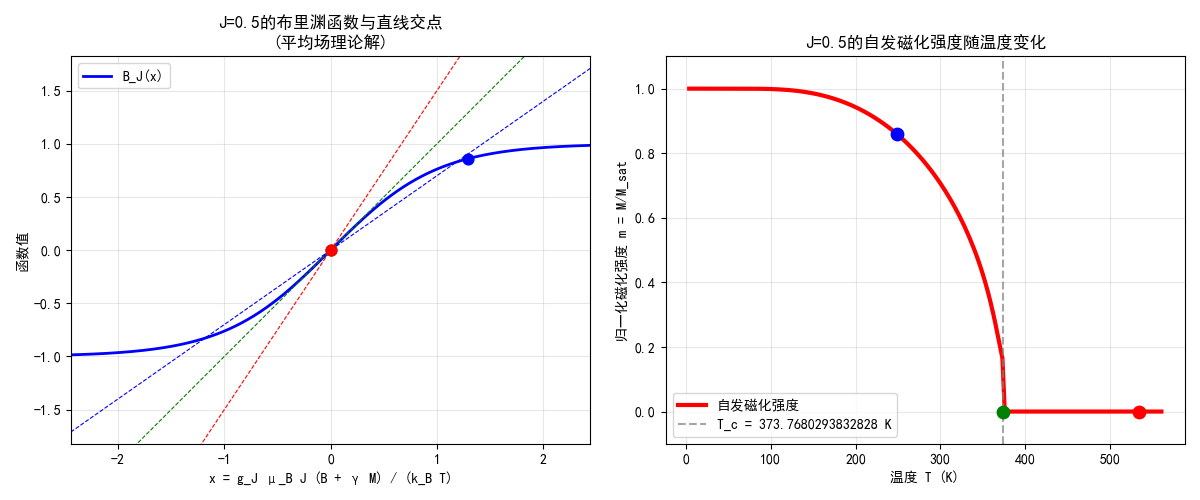托福阅读
忠告:除了时间不够或者题目过难有歧义,不要使用排除法。应当在选择正确答案的过程中排除。如果遇到了2选1的情况,一定是有细节上的错误,或者结构上的问题。
Structure
其实和听力很类似,阅读的结构大概分为以下几种:
- Explanation;
- Contrast;
- Paralell Classification;
- Problems and solutions.
具体的结构并不重要,但是结构可以指导我们阅读文章。对于一篇新的文章:
- 首先应该看文章的标题,找到文章的对象;
- 然后看第一段,了解文章的主题;
- 接着看中间部分的主旨句,了解文章的结构;
- 而最后的讨论、举例或者升华,则不必在粗看的时候阅读。
Question type
Factual Infromation 事实信息题
- According to paragraph 1, …
- Which of the following is true of …
- Paragraph 1 suggests that …
以第一种提问居多。事实信息题考察段落中的细节,所以看到题目的第一反应应该是迅速定位题目的信息出处,并上下查看。一般来说,错误选项设置为
- 过于绝对;
- 颠倒黑白;
- 更换对象…
Factual Infromation - Not true / Except 否定事实信息题
- According to paragraph 1, … Except:
Which of the following is NOT true of …
无中生有;
- 颠倒黑白…
Vocabulary 词汇题
- The word/phrase in the passage is closest in meaning to…
没什么好说的,有的词汇有多种意思,需要选择合适的意思;有的词汇可能涉及俚语,更需要关注语境。
Inference 推理题
- Which of the following can be inferred about X?
- The author of the passage implies that X…
比起事实信息题,推理题需要关注文本的逻辑,但是不需要推断,正确选项只是文本信息的综合与换皮。
对比事实信息题和推理题:
Paragraph: Vince is sad
Factual information: What is the emoational state of Vince? - Sad
Inferrence: What can be inferred about Vince? - Vince is unhappy.Purpose 目的题
作者写Paragraph/Sentence/Phrase是有目的的,这些目的包括:
- (Example) to provide an example
- (Explanation) to illustate/explain/clarify …
- (Refutation) to refute/criticize …
- (Suggestion) to suggest/indicate …
- (Argumentation) to argue/emphasize
- …
一般而言,目的题不会考察举例、解释之间的区别,也不会考察发表观点和着重强调的区别,这意味着其实不需要关注目的性,而只需要关注目的本身是否正确,或有逻辑关系。有的题目则会考察上述目的的区别:
Physiological adaptations can assist amphibians in colonizing habitats where extreme conditions prevail. The tolerance range in body temperature represents the range of temperatures within which a species can survive. One species of North American newt is still active when temperature drops to -2℃ while one South American frog feels comfortable even when temperatures rise to 41℃—-the highest body temperature measured in a free-ranging amphibian. Recently it has been shown that some North American frog and toad species can survive up to five days with a body temperature of -6℃ with approximately one-third of their body fluids frozen.
Why does the author mention a “South American frog” species in the passage
- To make the point that an amphibian’s temperature tolerance depends on a number of factors
- To indicate how precise the range of body temperatures is for certain amphibians
- To contrast its ability to adapt to that of the North American newt
- To help illustrate the range of environmental conditions to which amphibians have adapted
我们对比以下两种问法:What is the role of “South American frog” species in the passage和Why does the author mention a “South American frog” species in the passage。
如果是前者,那么答案就是C了,因为对比物的作用就是用于对比,然而作者希望对比的效果是什么呢?D才是作者提及他的原因,尽管严格来说,C仅是更加浅层而已。
Pronoun Referral 指代题
暂时没有遇到过。
Simplification 句子简化题
- Which of the following best expresses …
- Incorrect choices change the meaning in important ways or leave out essential information.
其实题目已经说了,有两种错误:
- 信息矛盾;
- 主次颠倒。
Cohesion 句子插入题
关注句子与上下文的指代词,逻辑词。
Summary 总结主旨题
- Some answer choices do not belong in the summary because they express ideas that are not presented in the passage or are minor ideas in the passage.
同样题目已经说了错误的种类:
- 无中生有;
- 信息矛盾;
- 主次颠倒。
其中前两者是多见的,第三种因为需要把我整体的意思,所以稍显难度。
The Development of Instrumental Music
Until the sixteenth century, almost all music was written for the voice rather than for musical instruments. Even during the Renaissance (from the fourteenth to the sixteenth century), instrumental music was, for the most part, the result of substituting an instrument for a voice in music written for singing or dancing. The seventeenth century marked the rise of music that lacked extramusical meaning. Like a mathematical equation or geometric formula, the instrumental music of the early modern era carried no explicit narrative content—it was neither a vehicle of religious expression nor a means of supporting a secular (nonreligious) vocalized text. Such music was written without consideration for the associational content traditionally provided by a set of sung lyrics. The idea of music as an aesthetic exercise, composed for its own sake rather than to serve a religious or communal purpose, was a notable feature of the seventeenth century and one that has distinguished modern Western European music from the musical traditions of Asia and Africa.
Not surprisingly, the rise of instrumental music was accompanied by improvements in instruments and refinements in tuning. Indeed, instrumental music came to dominate musical composition at the very moment that Western musicians were perfecting such stringed instruments as the violin, viola, and cello and such keyboard instruments as the organ and harpsichord. By the early eighteenth century, musicians were adopting the system of tuning known as equal temperament, whereby the octave was divided into twelve half-steps of equal size. Johann Sebastian Bach’s Well-Tempered Clavier (1722) was an attempt to popularize this system to a skeptical musical public. The new attention paid to improving instruments and systematizing tuning mirrored the efforts of scientists and philosophers to bring precision and uniformity to the tools and methods for scientific inquiry.
In the seventeenth century, northern Italy was the world center for the manufacture of violins. The Amati, Guarneri, and Stradivari families of Cremona, Italy, established the techniques of making high-quality violins that were sought in all of the great courts of Europe. Transmitted from father to son, the construction techniques used to produce these instruments were guarded so secretly that modern violinmakers have never successfully imitated them. Elsewhere, around 1650, earlier instruments were standardized and refined. Some ancient instruments underwent development; for instance, the shawm became the oboe. Also during this period amateur music making was widespread, and professional performance also took a great leap forward, as a new breed of virtuosi inspired the writing of treatises on performance techniques.
Three main types of composition—the sonata, the suite, and the concerto—dominated seventeenth-century instrumental music. All three reflect the baroque taste for dramatic contrasts in tempo and texture. The sonata (from the Italian word for “sounded,” that is, music played and not sung) is a piece written for a few instruments—often no more than one or two. It usually consisted of three movements of contrasting tempo—fast/slow/fast—each based on a song or dance form of the time. The suite, written for any combination of instruments, is a sequence or series of movements derived from various European court or folk dances—for example, the sarabande, the pavane, the minuet, and gigue, or jig. Henry Purcell (1659-1695) in England, Francois Couperin (1668-1733) in France, and Johann Sebastian Bach (1685- -1750) in Germany all contributed to the development of the suite as a musical genre. Finally, the concerto (from the same root as concertato, which describes opposing or contrasting bodies of sound) is a composition consisting of two groups of instruments, one small and the other large, playing in dialogue. The typical baroque concerto, the concerto grosso (“large concerto”) featured several movements whose number and kind varied considerably.
The leading Italian instrumental composer of the baroque era was Antonio Vivaldi (1678-1741). Vivaldi wrote some 450 concertos. He systematized the concerto grosso into a three-movement form (fast/slow/fast) and increased the distinctions between solo and ensemble groups in each movement. Of the many exciting compositions Vivaldi wrote for solo violin and ensemble, the most glorious is The Four Seasons, a group of four violin concertos, each of which musically describes a single season.
In the seventeenth century, instrumental music in western Europe developed in ways that distinguished it from earlier European music and the musical traditions of Asia and Africa.
A. Before the seventeenth century, instrumental music was based on mathematical and scientific principles.
B. The development of instrumental music in the seventeenth century went along with the improvements in design, tuning, and playing of musical instruments.
C. The Baroque period was dominated by composers from a few aristocratic families from northern Italy.
D. The distinctive feature of seventeenth-century instrumental music was its independence of any text: narrative, or extramusical meaning.
E. The instrumental music in sonatas, suites, and concertos was characterized by dramatic contrasts of tempo, texture, and instrumental group.
F. After the seventeenth century, most baroque instrumental composers wrote concertos more than any other type of composition.
D对应了第一段,B对应了二三段,C对应了第五段,E对应了第四段。然而,整篇文章的结构为:
- instrumental music serve for its own sake;
- instrumental music appear with the improvement of instruments and tuning;
- main types of composition—the sonata, the suite, and the concerto;
- baroque era
且不说C的内容正确与否,其代表的段落在文章中并不是主要的,所以可以直接排除。
Sample
Pinyon Pines and Pinyon Jays
Organisms of different species frequently evolve adaptations that make them utterly and specifically dependent on each other for resources. For example, many trees must have mycorrhizal fungi living in their root systems, fungi that are indispensable to the tree because they facilitate mineral uptake from the soil. In turn, the fungi rely on the trees to photosynthesize; they use some of the tree’s chemical food as their only energy source. Such intimate relationships are examples of coevolution through which two species become so interdependent that they can thrive only in each other’s presence.
At first glance, the relationship between pinyon pine trees and the pinyon jay does not appear to be one of coevolution. Pinyon pines produce cones and seeds that attract seed predators, especially the pinyon jay. A seed, of course, contains an embryonic plant for the next generation. Why sacrifice it to an animal? Some plants have poisonous seeds, an obvious adaptation to reduce loss to animals. Pinyons, however, have an array of characteristics that combine to encourage jays to visit the pines and help themselves to the seeds. Cones are positioned upward and outward on the tree, so the seeds inside are in plain sight of the jays, essentially inviting them to partake. Pinyon seeds are unusually large, and each seed is high in energy. The seed coat is thin, meaning that birds such as pinyon jays can not only ingest the seeds but also digest them. In many plants, an indigestible seed coat permits the seed to pass unharmed through the bird’s alimentary system. Pinyon seed coats differ in color between edible and nonviable seeds, signaling the jays as to which they should select.
Attracting seed predators would not seem to be a successful survival strategy for pinyon pines. However, pinyon jays are behaviorally adapted to bury any seeds in excess of their immediate survival needs. This is a useful behavior for the jays, providing they can retrieve some of the buried seeds during winter, and good for the trees, as the unretrieved seeds are ready to germinate. Still, for the jays to bury any seeds, there must be an abundance of seeds far beyond the jays’ immediate needs. One tree could never produce so many seeds, but if all the pinyons in a region produced heavy seed crops at once, they would indeed “flood the market” with vastly more pinyon seeds than the local population of jays could consume. In fact, that is exactly what the pinyon pines do.
It requires a great deal of energy to make so many seeds, so much energy that it is unlikely that a pinyon population could produce such a bumper seed crop every year. More important, however, it would be to the severe disadvantage of the trees to produce large seed crops annually, even if they could. Doing so would make the resource not only abundant but also predictable. Seed predators could, over the years, steadily build their populations, eventually increasing so much that they could, indeed, consume virtually all of the seeds. It is much more adaptive for the plants to produce seed cornucopias intermittently. Doing so has several major advantages. First, energy can be stored for some years and then devoted to cone and seed production, ensuring adequate energy to produce a large seed crop. As a result, less energy will be needed to produce a crop of seeds large enough to flood the reduced market for them. Second, seed-predator populations will decline in years of low seed production, either through starvation, reduced reproduction, or emigration. Pinyons in most areas have a roughly six-year interval between heavy seed crops.
Pinyon jays have so completely adapted to the cycle of the pinyons that their reproduction is tied to it. Most species of birds mature sexually in response to changes in day length. In pinyon jays, however, day length is only one stimulus for reproduction. The other cue is availability of pinyon seeds. When seeds are abundant, jays can breed very early in spring, continue breeding through summer, and reenter breeding condition as early as the winter solstice. So the jay population temporarily enlarges in response to one of the intermittent large crops of pinyon seeds. But the increase in the population of jays is less than the increase in the size of the seed crop. Thus many of the seeds of a bumper crop are buried and subsequently germinate, many more than would germinate without planting by the jays.
初看本文,即可得知本文的对象为:Pinyon Pines and Pinyon Jays;然后分析文章的结构:
- The definition of coevolution;
- Pinyon Pines and Pinyon Jays seem to be without coevolution;
- Pinyon Pines provide seeds for Jays;
- Pinyon Jays bury seeds to help transmitting seeds;
- Pinyon Pines’ method to produce seeds;
- Pinyon Pines and Pinyon Jays are with coevolution.
- (Vocabulary) The word “indispensable” in the passage is closest in meaning to
- (Factual information) According to paragraph 1, mycorrhizal fungi need to live in root systems of trees in order to
- (Vocabulary) The word “partake” in the passage is closest in meaning to
- (Inference) Which of the following can be inferred about pinyon pines from paragraph 2
- (Factual information - Except) According to paragraph 2, all the following are characteristics of pinyon pine seeds that make them attractive to seed predators EXCEPT:
- (Inference) It can be inferred from paragraph 4 that the reason the pinyon jay population in an area declines for several years in succession is that
- (Factual information) According to paragraph 4, which of the following is a reason why pinyon pines do not produce a bumper seed crop every year
- C. With any fixed level of seed production, populations of seed predators would eventually increase to consume the available crop of seeds.
- D. The environment cannot support as many pinyon pines as a yearly bumper seed crop would produce.
这道题CD乍一看都是对的,但在选择的时候犯了错误,此时不应该选择我认为更对的那个,而是应该看细节的错误——D并不是环境无法提供能量,而应该是 pinyon pines 本身无法提供这么多能量。
- (Purpose) What purpose does the discussion of paragraph 5 serve in the passage as a whole?
(Cohesion) Look at the four squares[ ] that indicate where the following sentence can be added to the passage.Where would the sentence best fit?Click on a square[ ] to insert the sentence in the passage
- As a result, less energy will be needed to produce a crop of seeds large enough to flood the reduced market for them.
(Summary) Directions: An introductory sentence for a brief summary of the passage is provided below. Complete the summary by selecting the THREE answer choices that express the most important ideas in the passage. Some answer choices do not belong in the summary because they express ideas that are not presented in the passage or are minor ideas in the passage. This questions is worth 2 points.Although many trees have evolved ways to protect their seeds from predators, pinyon pines attract the seed predators with which they have coevolved.
- A. By using color coding, prominent display, and high nutritional value: pinyon pines make their seeds worth eating and storing by pinyon jays.
- B. The reproductive cycle of pinyon jays is controlled in part by the variable availability of pinyon seeds.
- C. The reproductive cycle of pinyon jays is controlled in part by the changing period of daylight.
- D. Pinyon pines ensure a good germination rate for their seeds by producing every few years seeds in such abundance that pinyon jays bury many of them.
- E. Pinyon pines adjust their seed production to the size of the local pinyon jay population so as to assure that each year some pinyon seeds will be buried by jays.
- F. By a process of mutual adaptation, predators and the plants or animals they prey on always come to form a balanced and mutually advantageous relationship.
这道题目很容易选择了F,但是F是没有提到mutation和balance的,属于无中生有;反倒是A,看上去是对的,但仔细一想,貌似using color有些过于minor了,但其实重点是pinyon pines’ seed worth eating and storing by pinyon jays,这就没有问题了。





